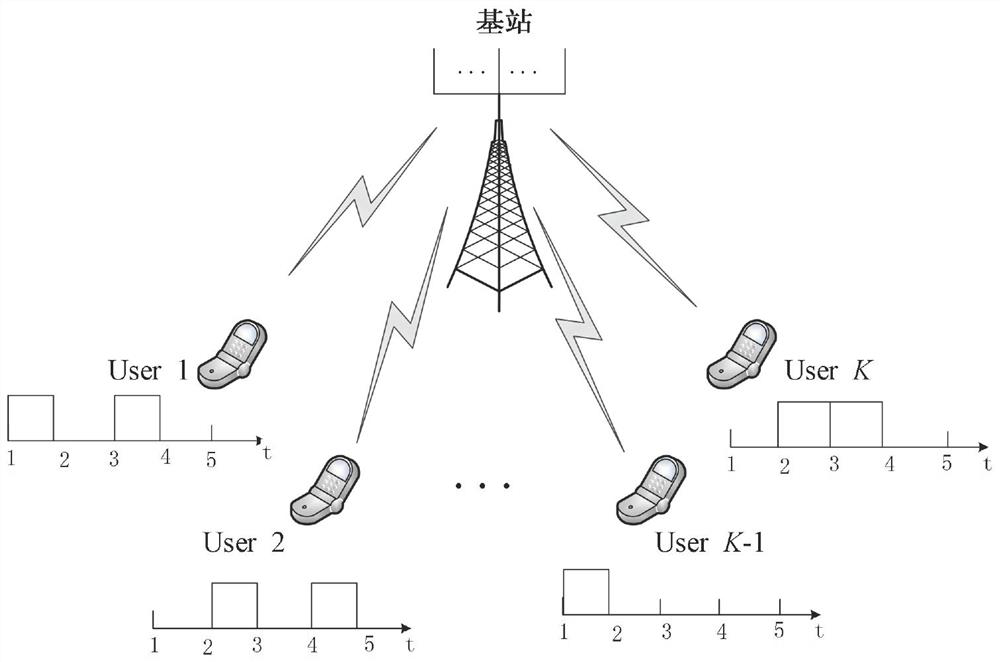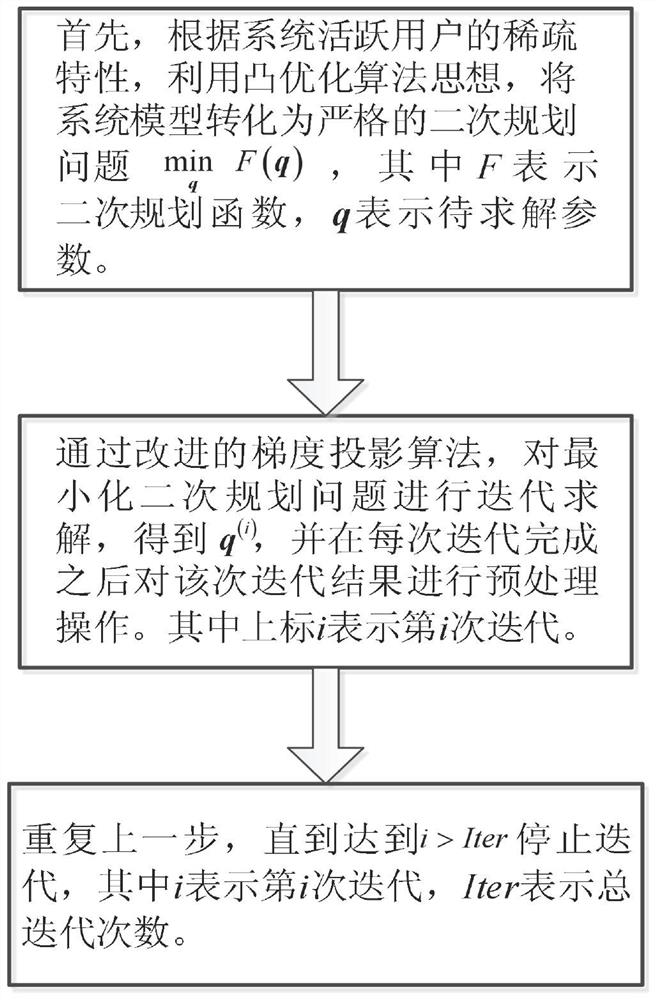Signal detection method for low-complexity mimo-noma system based on improved gradient projection method
A technology of MIMO-NOMA and gradient projection method, which is applied in the field of wireless communication, can solve the problems of non-orthogonal signal interference and high computational complexity of signal detection methods, so as to speed up the convergence speed, improve signal detection performance, and reduce computational complexity Effect
- Summary
- Abstract
- Description
- Claims
- Application Information
AI Technical Summary
Problems solved by technology
Method used
Image
Examples
Embodiment Construction
[0027] The preferred embodiments of the present invention will be described in detail below with reference to the accompanying drawings.
[0028] The present invention provides a system environment uplink multi-user Grant-free MIMO-NOMA system model such as figure 1 shown.
[0029] First consider the uplink multi-user Grant-free MIMO-NOMA system. Suppose the base station is equipped with N r There are K single-antenna users in the cell. After channel coding and modulation, assemble from the complex constellation Get the sending symbol x of the kth user in k . Then, the symbol x that will be sent k Modulated to a spreading sequence s of length N k , satisfying N<K, that is, the system is an overload system. After that, the signals of all active users are superimposed, and then transmitted simultaneously through N orthogonal OFDM subcarriers. The signal received on the mth subcarrier of the jth antenna is:
[0030]
[0031] Among them, s mk is the propagation sequ...
PUM
 Login to View More
Login to View More Abstract
Description
Claims
Application Information
 Login to View More
Login to View More - R&D
- Intellectual Property
- Life Sciences
- Materials
- Tech Scout
- Unparalleled Data Quality
- Higher Quality Content
- 60% Fewer Hallucinations
Browse by: Latest US Patents, China's latest patents, Technical Efficacy Thesaurus, Application Domain, Technology Topic, Popular Technical Reports.
© 2025 PatSnap. All rights reserved.Legal|Privacy policy|Modern Slavery Act Transparency Statement|Sitemap|About US| Contact US: help@patsnap.com



